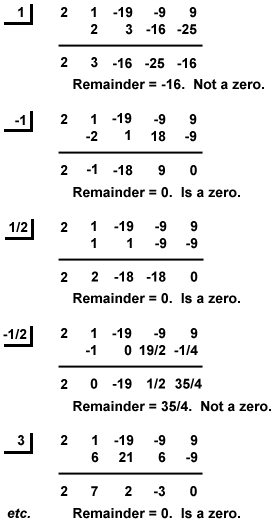Please wait while we process your payment
If you don't see it, please check your spam folder. Sometimes it can end up there.
If you don't see it, please check your spam folder. Sometimes it can end up there.
Please wait while we process your payment

By signing up you agree to our terms and privacy policy.
Don’t have an account? Subscribe now
Create Your Account
Sign up for your FREE 7-day trial
By signing up you agree to our terms and privacy policy.
Already have an account? Log in
Your Email
Choose Your Plan
Individual
Group Discount
Save over 50% with a SparkNotes PLUS Annual Plan!
 payment page
payment page
Purchasing SparkNotes PLUS for a group?
Get Annual Plans at a discount when you buy 2 or more!
Price
$24.99 $18.74 /subscription + tax
Subtotal $37.48 + tax
Save 25% on 2-49 accounts
Save 30% on 50-99 accounts
Want 100 or more? Contact us for a customized plan.
 payment page
payment page
Your Plan
Payment Details
Payment Summary
SparkNotes Plus
You'll be billed after your free trial ends.
7-Day Free Trial
Not Applicable
Renews July 25, 2025 July 18, 2025
Discounts (applied to next billing)
DUE NOW
US $0.00
SNPLUSROCKS20 | 20% Discount
This is not a valid promo code.
Discount Code (one code per order)
SparkNotes PLUS Annual Plan - Group Discount
Qty: 00
SparkNotes Plus subscription is $4.99/month or $24.99/year as selected above. The free trial period is the first 7 days of your subscription. TO CANCEL YOUR SUBSCRIPTION AND AVOID BEING CHARGED, YOU MUST CANCEL BEFORE THE END OF THE FREE TRIAL PERIOD. You may cancel your subscription on your Subscription and Billing page or contact Customer Support at custserv@bn.com. Your subscription will continue automatically once the free trial period is over. Free trial is available to new customers only.
Choose Your Plan
This site is protected by reCAPTCHA and the Google Privacy Policy and Terms of Service apply.
For the next 7 days, you'll have access to awesome PLUS stuff like AP English test prep, No Fear Shakespeare translations and audio, a note-taking tool, personalized dashboard, & much more!
You’ve successfully purchased a group discount. Your group members can use the joining link below to redeem their group membership. You'll also receive an email with the link.
Members will be prompted to log in or create an account to redeem their group membership.
Thanks for creating a SparkNotes account! Continue to start your free trial.
We're sorry, we could not create your account. SparkNotes PLUS is not available in your country. See what countries we’re in.
There was an error creating your account. Please check your payment details and try again.
Please wait while we process your payment

Your PLUS subscription has expired
Please wait while we process your payment
Please wait while we process your payment

The Rational Zeros Theorem
A root or zero of a function is a number that, when plugged in for the variable, makes the function equal to zero. Thus, the roots of a polynomial P(x) are values of x such that P(x) = 0.
The Rational Zeros Theorem states:
If P(x) is a polynomial with integer coefficients and ifis a zero of P(x) (P(
) = 0), then p is a factor of the constant term of P(x) and q is a factor of the leading coefficient of P(x).
We can use the Rational Zeros Theorem to find all the rational zeros of a polynomial. Here are the steps:
 . Remember that since
factors can be negative,
. Remember that since
factors can be negative,  and -
and -  must both be included.
Simplify each value and cross out any duplicates.
must both be included.
Simplify each value and cross out any duplicates.
 for which
P(
for which
P( ) = 0. These are all the rational roots of P(x).
) = 0. These are all the rational roots of P(x).
Example: Find all the rational zeros of P(x) = x3 -9x + 9 + 2x4 -19x2.
 : ±
: ± , ±
, ± ,
±
,
± , ±
, ± , ±
, ± , ±
, ± .
These can be simplified to: ±1, ±
.
These can be simplified to: ±1, ± , ±3, ±
, ±3, ± , ±9, ±
, ±9, ± .
.

 , and 3.
, and 3.
We can often use the rational zeros theorem to factor a polynomial. Using synthetic division, we can find one real root a and we can find the quotient when P(x) is divided by x - a. Next, we can use synthetic division to find one factor of the quotient. We can continue this process until the polynomial has been completely factored.
Example (as above): Factor P(x) = 2x4 + x3 -19x2 - 9x + 9.
As seen from the second synthetic division above, 2x4 + x3 -19x2 -9x + 9÷x + 1 = 2x3 - x2 - 18x + 9. Thus, P(x) = (x + 1)(2x3 - x2 - 18x + 9). The second term can be divided synthetically by x + 3 to yield 2x2 - 7x + 3. Thus, P(x) = (x + 1)(x + 3)(2x2 - 7x + 3). The trinomial can then
be factored into (x - 3)(2x - 1). Thus, P(x) = (x + 1)(x + 3)(x - 3)(2x - 1). We can see that this solution is correct because the four rational roots
found above are zeros of our result.
Please wait while we process your payment

